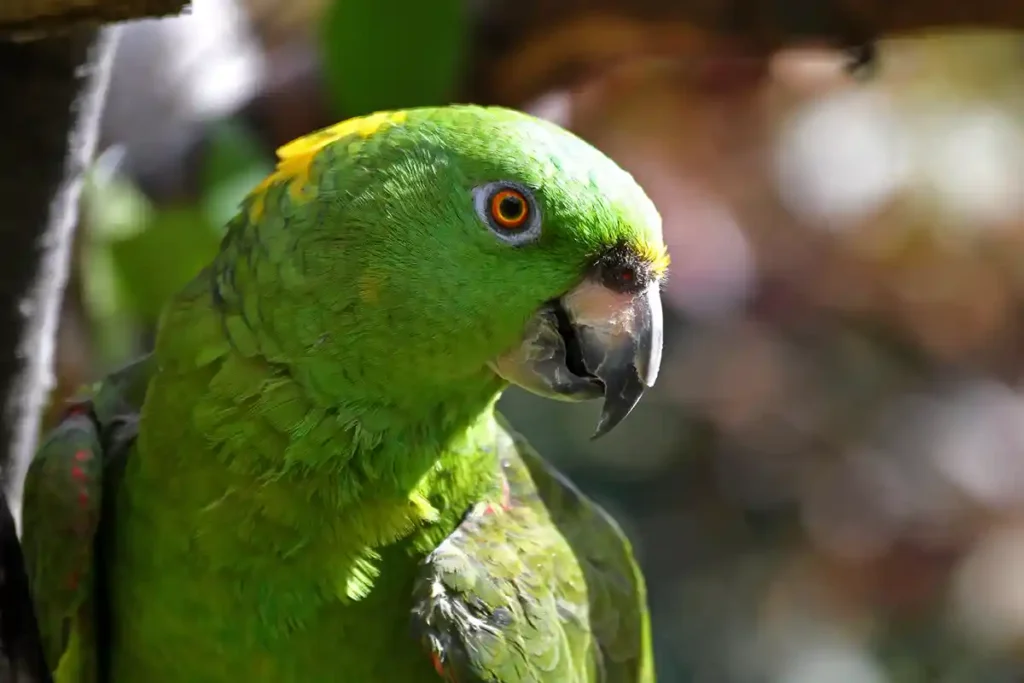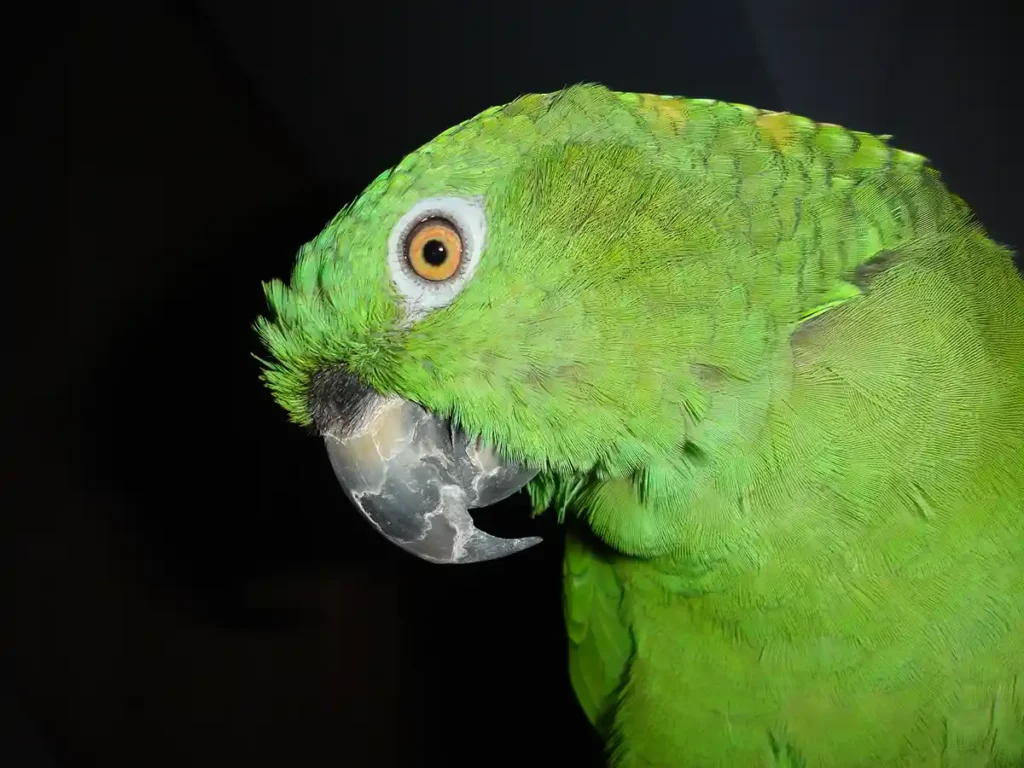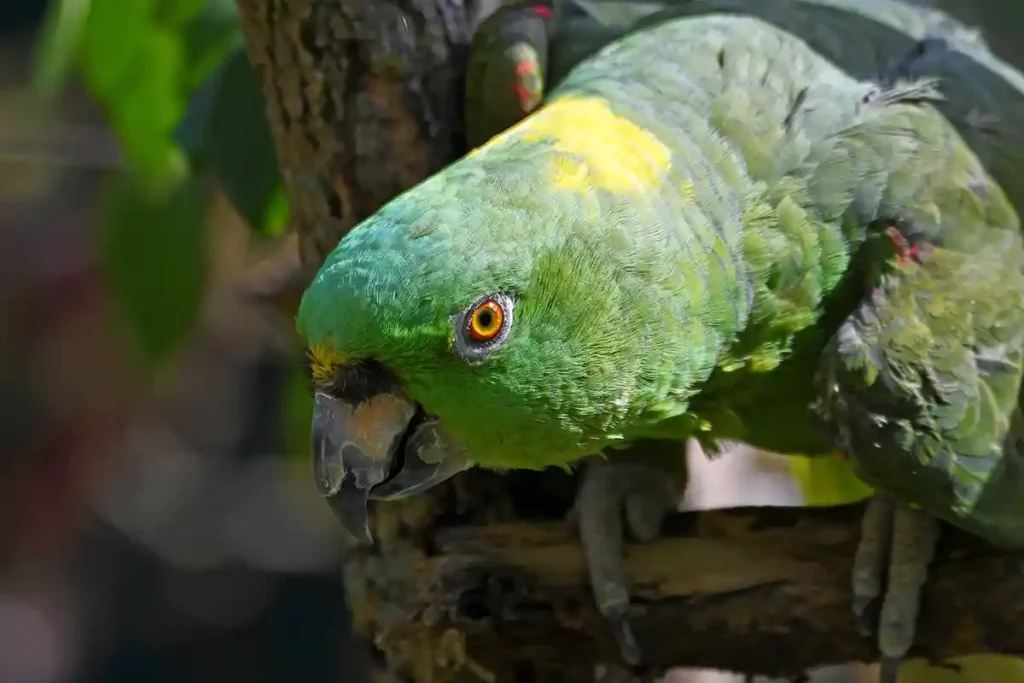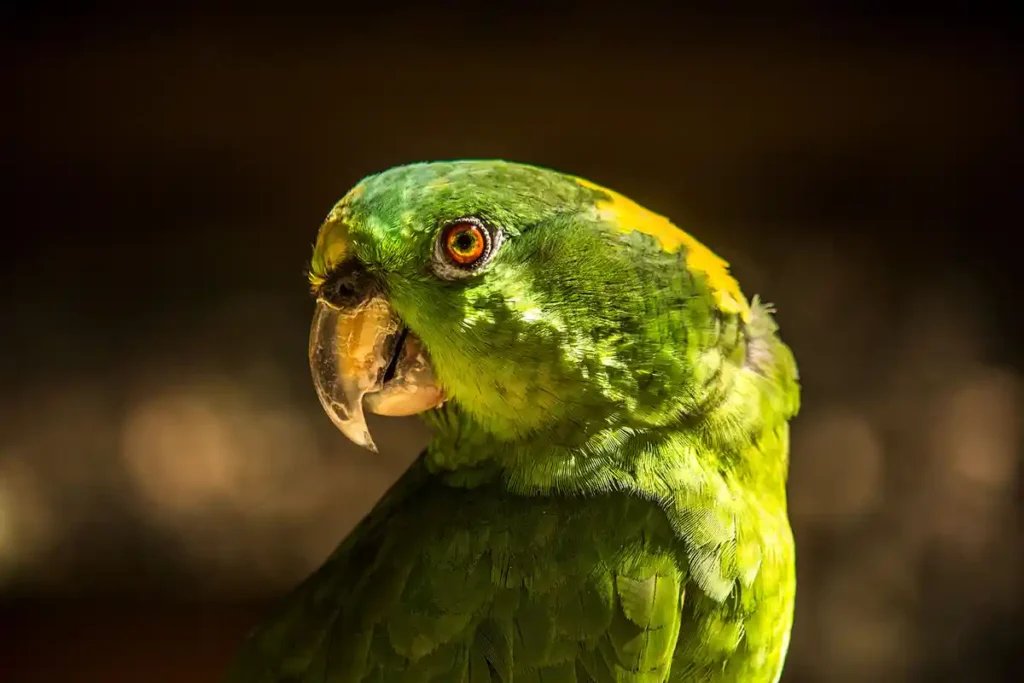
Have you ever stumbled across a Yellow-naped Amazon (Amazona auropalliata), and marveled at its vibrant colors, intelligent gaze, and lively demeanor? Known for their intelligence and striking appearance, these birds hold a unique charm that captures the hearts of bird enthusiasts globally. In this article, we’ll take a deep dive into the world of the Yellow-naped Amazon parrot, exploring their behaviors, diets, and everything else you’d love to know about this fascinating bird species.
Species Overview and Identification
The Yellow-naped Amazon Parrot (Amazona auropalliata) is a parrot species native to the Pacific coast of Central America. With their bright green bodies and characteristic yellow patch on the nape of their necks, these parrots are easily identifiable. They have a robust build and a wingspan that can reach up to 15 inches.

Yellow-naped Amazons, or Amazona auropalliata, present a captivating sight with their vivid feathers and distinguishing features. Named after their striking yellow napes, these parrots are recognized by a distinct patch of golden-yellow feathers on the back of their neck, setting them apart from other parrot species. The area around the nape, head, and back of the Yellow-naped Amazon is primarily green, with a crown of gray or turquoise feathers adorning their forehead, giving them a regal appearance.
The South American group of these parrots, aptly named “Flyers,” showcases a subtle variation in color. In comparison to their Mexico or Costa Rican counterparts, they flaunt an additional splash of red on their tail feathers. This unique patch of color serves as an identifier for their group name, distinguishing them within their Amazona order.
Subspecies, such as the Amazona ochrocephala auropalliata, have distinct markings on their tail feathers, characterized by red and yellow hues. It’s like each subspecies and group wears a unique combination of colors, making it a fascinating study for bird enthusiasts.
The Yellow-naped Amazon’s beak is sturdy and robust, designed to crack open nuts and fruits found in their native forests and zones. Their beak is gray at the base, transitioning into a lighter shade of flesh color towards the tip. Their feet are zygodactyl, meaning they have two toes facing forward and two backward, a common trait in the parrot order.
Their body size varies with age and maturity. A full-grown adult can reach a height of about 15 inches from head to tail, with a wingspan that adds to their imposing presence. Interestingly, there is no visual difference between males and females, making it challenging to determine their sex without DNA testing.
One of the most endearing traits of Yellow-naped Amazons is their expressive eyes. The eyes of these birds are surrounded by a white eye-ring with an inner spot of gray, while the iris itself is a deep, rich brown. As a baby, their eyes are gray, which darkens with age. It’s said that looking into their eyes is akin to observing the curiosity of a human toddler.
Yellow-naped Amazons are a variety of Amazon parrots, each showcasing unique colors and personalities. The color of their feathers can range from the predominant green to shades of yellow, red, and even turquoise. These vibrant colors, coupled with their ability to mimic human speech, make them popular pets worldwide. Each bird, with its unique markings and traits, adds to the colorful panache of the Amazon parrot family.

Natural Habitat
The fascinating Yellow-naped Amazon, scientifically known as Amazona auropalliata, naturally inhabits the verdant tropical woodlands along the Pacific coast, ranging from Southern Mexico to Costa Rica. With a significant population size, these stunning parrots have established a stronghold in specific areas of Honduras, Nicaragua, and El Salvador, thriving amidst the region’s tropical climate. Their chosen habitats are rich with a variety of trees, providing the Yellow-naped Amazon with ample shelter and nesting opportunities.
Interestingly, the Yellow-naped Amazon shares its environment with other parrot species like the Yellow-crowned Parrot, White-fronted Parrot, and Red-lored Parrot. These diverse parrot populations contribute to the vibrant biodiversity of the region, making it a paradise for bird behaviorists and enthusiasts.
Diet and nutrition
In their natural habitats spanning Costa Rica, Nicaragua, Honduras, Guatemala, and Mexico, Yellow-naped Amazons are primarily granivores. They feast on a diet rich in seeds, fruits, nuts, and berries. The vast areas of tropical forests provide them with abundant food sources. When in captivity, their diet should replicate their wild nutrition as closely as possible, including a seed mix, fresh fruits, vegetables, and nuts. This ensures they receive the correct balance of nutrients, helping prevent obesity and other health problems.

Behavior and Communication
Yellow-naped Amazons are social creatures, often found in flocks in the wild. Their behavior includes forming strong pair bonds and displaying playful and affectionate temperaments. The group dynamics extend to their communication abilities, which they utilize through a variety of calls. Each call, varying in pitch and clarity, can communicate different emotions or signals to others in the flock. Their unique ability to mimic human languages and sounds make them a favorite among breeders and parrot enthusiasts.
One fascinating behavior is “eye pinning,” where their pupils rapidly dilate and constrict when they’re excited or agitated, a clear sign of their emotional state. This behavior is one of the many reasons these birds captivate animal behaviorists and bird lovers alike.
Breeding and Reproduction
The breeding season for these parrots typically falls between March and July, depending on the weather and geographical location. Courtship behaviors are distinct, with the male parrot often singing to his prospective mate. The female, or hen, lays two to four eggs in a tree cavity, which becomes the nest site.
She incubates the eggs for about 26 days, during which the male may stand guard and return to the nest with food. The baby birds, or chicks, start to fly around 60 days but stay with their parents until weaning, extending their time in the nest. This period, often compared to human adolescence, is crucial for their socialization and learning essential survival habits.
Yellow-naped Amazon as Pets
Yellow-naped Amazons make excellent pets for the right people, mainly because of their engaging personalities and long life span. They need plenty of attention, stimulation, and space to exercise their flight feathers. A cage stocked with toys, perches, and plenty of room for activities helps prevent boredom and provides enrichment.
However, adopting a Yellow-naped Amazon is not a decision to be taken lightly. These birds are not just pets; they form strong bonds with their human families, requiring the same level of commitment one would give to children. Potential owners should seek advice from experienced breeders or animal shelters before making the decision to bring one of these intelligent birds into their home.
Threats and Conservation Status
Unfortunately, the Yellow-naped Amazon faces significant threats, primarily due to habitat loss and the parrot trade, leading to a steady decline in their populations. The majority of these threats are human-made, such as deforestation for agriculture or urban development, removing the trees they use for nesting and food.
In addition, these birds are also affected by the illegal parrot trade. Many are captured from the wild and sold, often leading to a shortened lifespan and adverse effects on the species’ overall population number. According to the IUCN Red List, the Yellow-naped Amazon is now classified as Critically Endangered, highlighting the urgency for conservation efforts to protect these beautiful birds.

Frequently Asked Questions
How long does a Yellow-naped Amazon parrot live?
Yellow-naped Amazons have a remarkable life expectancy. With proper care, these birds can live up to 60 years, sometimes even more, in captivity. This longevity makes them lifelong companions, but it also means a long-term commitment from bird owners.
What is the Yellow-naped Amazon’s personality like?
These parrots are known for their playful and affectionate personality. They are intelligent, social creatures who enjoy interaction and can even imitate human verbal communication. Be prepared for a chatterbox if you’re planning to have one as a pet!
Can Yellow-naped Amazons talk?
Yes, they can! Yellow-naped Amazons are among the best talkers in the parrot world. They have an impressive ability to mimic human speech and can learn a variety of words, phrases, and even songs. Their vocabulary can range significantly, with some individuals learning hundreds of words.

Conclusion
The Yellow-naped Amazon parrot is indeed a remarkable bird. From their vibrant green and yellow coloring to their ability to imitate human verbal communication, these parrots are a testament to the wonders of the natural world. However, their survival is threatened, and it’s up to us to ensure these intelligent and beautiful creatures continue to thrive. Whether you’re a potential pet owner or just a bird enthusiast, understanding and appreciating these birds is the first step towards their conservation.
If you found this article useful and wish to learn more about exotic birds, please visit other pages on our site. You’re always welcome here in our bird-loving community!
